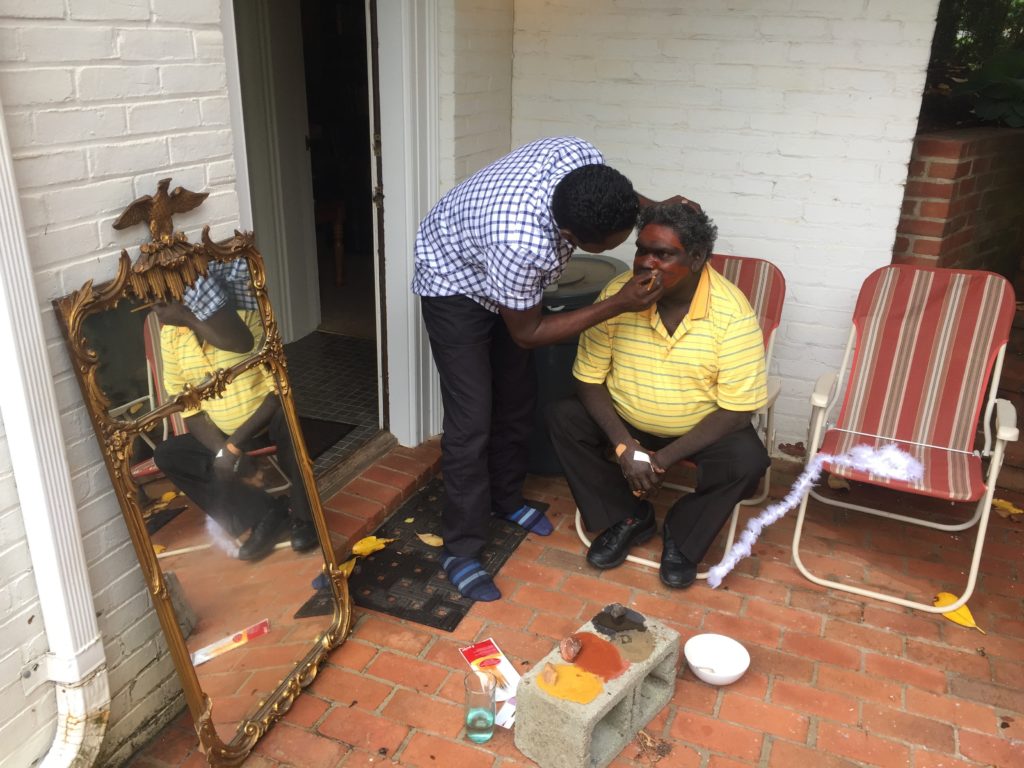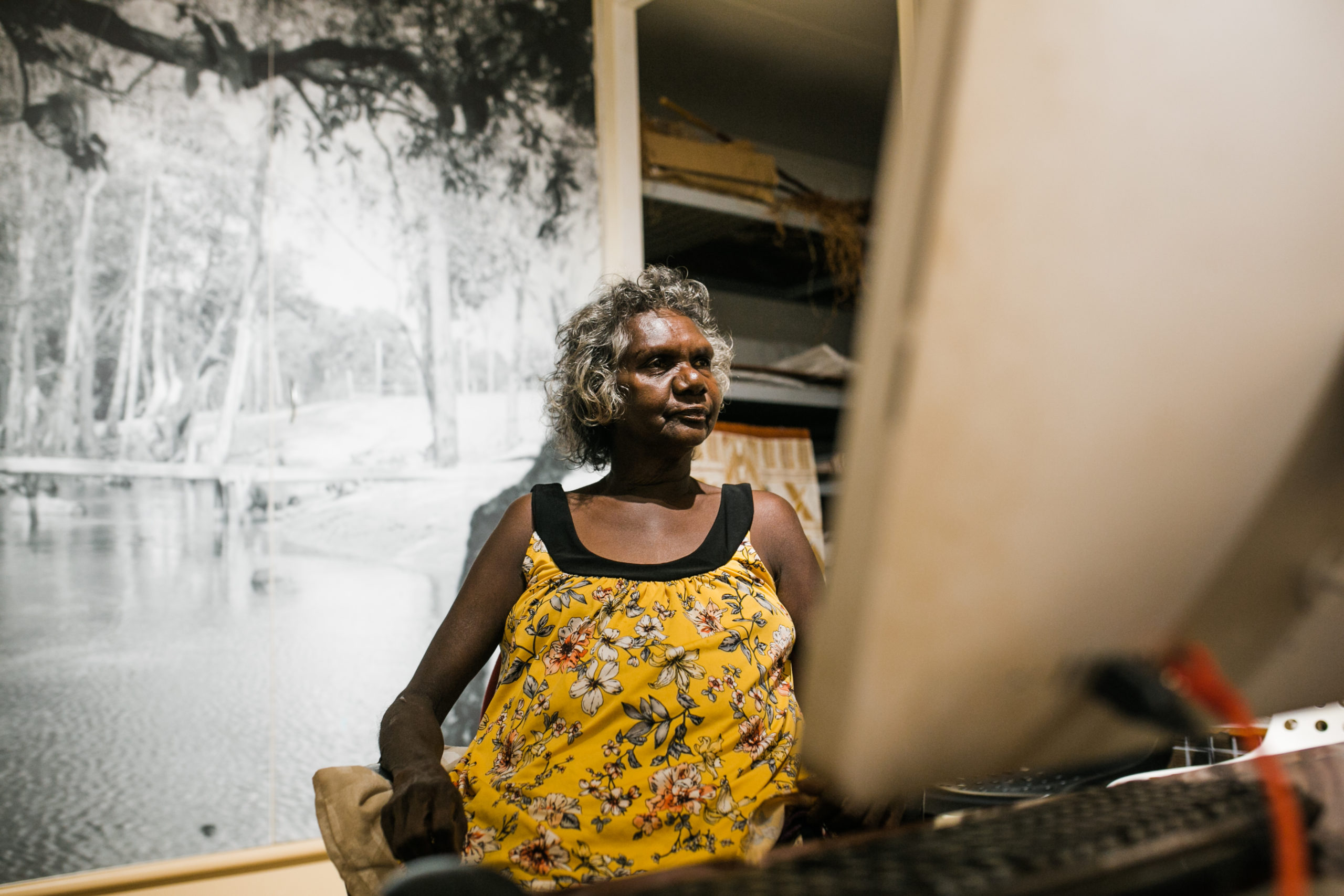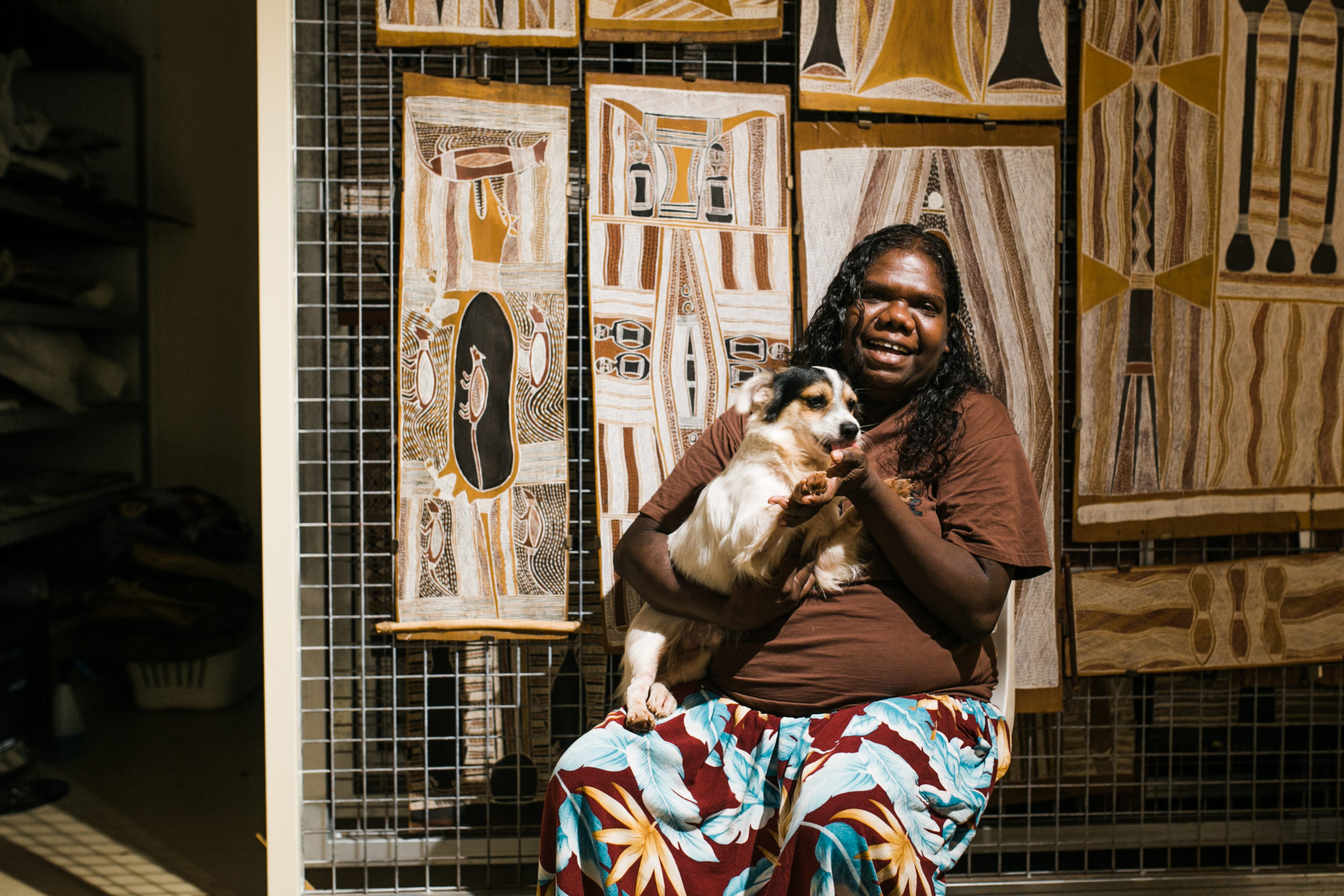
Yinimala Gumana and Wukun Waṉambi spent the day resting at the cottage on the hill outside Kluge-Ruhe. Wukun sat outside and observed the deer and squirrels in the field.
As the day led into the afternoon Yinimala insisted that it was time to prepare for the evenings event, the announcement that would mark the official launch a remarkable journey and a generous gift to be shared with the world: Maḏayin: Eight Decades of Aboriginal Australian Bark Painting from Yirrkala.
Yinimala and Wukun sat outside with a mirror that was bordered in gold and crested with the American eagle at the top. I mixed the rich ochres they had brought across the sea from the lands of northern Australia and the Miwatj region of the Yolŋu people.
Yinimala sang softly in his language as the two prepared to paint ceremonial patterns onto each other’s faces in preparation for the evening’s event. First Yinimala, then Wukun. As the older man put the finishing touches on his designs, he picked up his yiḏaki (didjeridu) and began to play the deep sacred sounds of his people’s instrument. Once again, Yinimala began to sing, progressing through the songlines of his Dhalwaŋu clan, his voice growing in intensity and volume. The song consumed the night as the power of Yolŋu ancestral presence made itself know in the Monacan lands of Charlottesville.
As the last notes of Yinimala’s song rang out into the evening, we made our way up to the museum, where a crowd of supporters had gathered, ready to join us on the first steps of the journey of Maḏayin.

